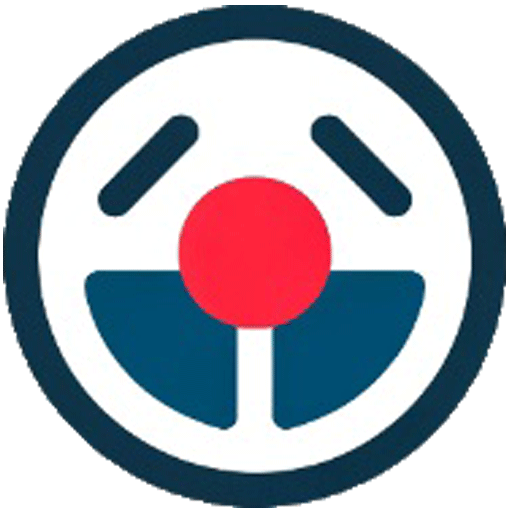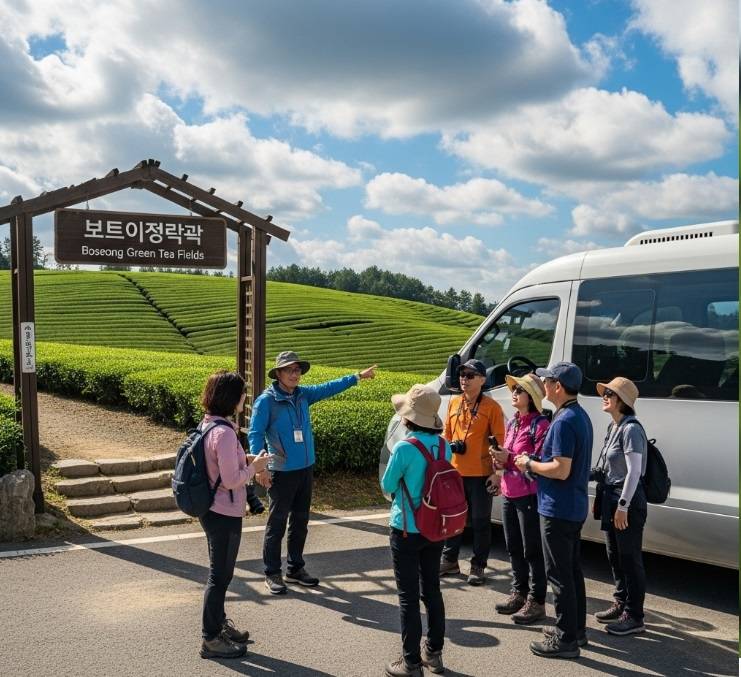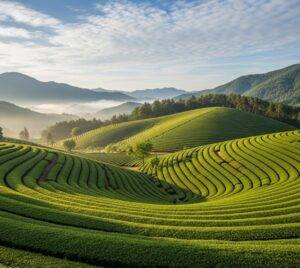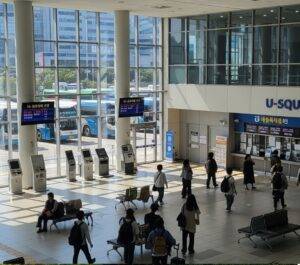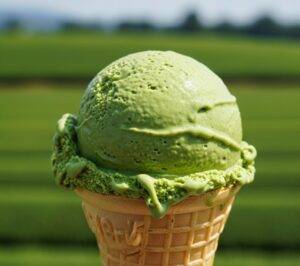Planning your Boseong green tea fields tour and caught at a crossroads? You’ve seen the breathtaking photos of endless, rolling hills of green and decided you have to see it for yourself. But now comes the critical question: should you navigate the journey yourself or book an all-in-one guided tour? You’re in the right place. As someone who has planned countless trips across every corner of Korea, I’m here to give you a clear, practical breakdown. This guide is designed to eliminate the guesswork, helping you decide and execute the perfect trip to the stunning Daehan Dawon Tea Plantation.
DIY vs. Guided Tour: Which is Best for You?
Your decision comes down to a trade-off between cost, convenience, and flexibility. For many, a day trip to Boseong from Gwangju is the most popular route. Let’s break down what each option looks like with this handy table.
Option 1: Your DIY Trip to Boseong
Choosing the DIY path is perfect for the adventurous traveler on a tighter budget who doesn’t mind a bit of logistical planning. It offers an authentic local travel experience and the ultimate freedom to explore at your own pace. The most common and efficient starting point is Gwangju.
How to get to Daehan Dawon
Your journey from Gwangju to the Daehan Dawon Tea Plantation (대한다원) is a two-step bus process.
Step 1: Gwangju to Boseong Head to the U-Square Bus Terminal in Gwangju. This is the city’s main transport hub. At the ticket counter, ask for a ticket to Boseong (보성).
- Frequency: Buses run frequently, roughly every 30-40 minutes.
- Travel Time: The journey takes approximately 1 hour and 30 minutes.
- Cost: A one-way ticket is about ₩10,000.
Step 2: Boseong Bus Terminal to the Tea Fields Once you arrive at the small Boseong Intercity Bus Terminal, you’ll need to take a local bus. Exit the terminal and look for the local bus stop. You need the bus bound for Yulpo (율포).
- Bus Name: Boseong-Yulpo (보성-율포) route.
- Instructions: Tell the driver you are going to “Daehan Dawon” (대한다원). They are very familiar with this stop.
- Travel Time: This final leg takes about 15-20 minutes. The bus will drop you off right at the entrance road to the plantation.
Boseong Green Tea Festival Dates
If you’re planning your trip for the spring, try to time it with the Boseong Green Tea Festival. It’s a vibrant celebration of the first harvest with cultural events and tea-picking experiences. The festival is typically held in early May. For the upcoming year, be sure to check the official Boseong County tourism website for the exact 2026 dates, as they are usually announced a few months in advance.
Option 2: The Best Guided Tours
If your priority is a seamless, stress-free experience, a guided tour is your best bet. This option is ideal for travelers with limited time, those who are hesitant about navigating public transport, or anyone who wants the added value of an English-speaking guide to explain the history and significance of the area.
Most tours operate as a day trip to Boseong from Gwangju, though some options from Busan or even Seoul (a very long day) exist. A typical Boseong tour package for foreigners will include:
- Round-trip transportation from a central meeting point in a comfortable coach or van.
- The entrance fee to the Daehan Dawon Tea Plantation.
- An English-speaking guide to lead the tour.
- A structured itinerary that often includes a lunch stop and sometimes a visit to the nearby Yulpo Beach.
This completely removes the stress of missing a connection or getting lost. You can simply sit back and enjoy the stunning scenery.
Ready to book? These are the most reliable platforms for finding high-quality tours with verified reviews from other travelers:
Our Recommendation: Who Should Choose Which?
- Choose DIY if: You are traveling on a strict budget, you enjoy the challenge and experience of using local transport, and you want the flexibility to spend as much time as you desire at the tea fields.
- Choose a Guided Tour if: You value convenience over cost, you have a limited amount of time, or you want a guaranteed stress-free day trip with the benefit of an English-speaking guide.
What to Eat in Boseong
A trip to Boseong isn’t complete without tasting the star ingredient! The area around the plantation is famous for its creative green tea-infused cuisine. Don’t leave without trying:
- Green Tea Ice Cream: The absolute must-try. It’s rich, flavorful, and incredibly refreshing after a walk up the hills. You can find it at the cafe inside the plantation.
- Green Tea Noodles: Many local restaurants serve dishes like jjajangmyeon (black bean noodles) or naengmyeon (cold noodles) made with green tea-infused noodles, giving them a subtle flavor and beautiful color.
- Green Tea Tteokbokki: A unique twist on the classic spicy rice cake dish, with a savory-sweet sauce that incorporates green tea powder.
Conclusion
Whether you choose the adventurous DIY route or the comfortable convenience of a guided tour, your visit to the Boseong green tea fields will be a highlight of your trip to South Korea. By weighing your personal travel style, budget, and schedule against the options above, you can confidently plan a day trip that is perfect for you. Enjoy the unforgettable views!
Frequently Asked Questions (FAQ)
How much is the entrance fee for Daehan Dawon?
As of late 2025, the entrance fee for the Daehan Dawon Tea Plantation is ₩4,000 for adults. Prices are subject to change, so it’s always good to have a little extra cash on hand.
What is the best time of year to visit the Boseong green tea fields?
The best time to visit is from late April to June when the tea leaves are at their most vibrant and lush green. The autumn months (September to October) also offer pleasant weather and beautiful scenery.
How much time do I need to walk around the tea fields?
Plan for at least 2 to 3 hours. This gives you enough time to walk the main path up to the viewpoint, take plenty of photos, and enjoy a green tea ice cream at the cafe without feeling rushed.
Are there English signs and information at the plantation?
There are some English signs for major points of interest and on the main map at the entrance. However, detailed informational plaques are mostly in Korean. This is one area where having a guide can enhance the experience.
Hi, I’m [jeybee]. As a long-time resident of Seoul, I’m passionate about uncovering the authentic, everyday magic of Korea. This blog is my way of sharing my favorite spots, tips, and cultural insights with you, beyond the usual tourist traps.
